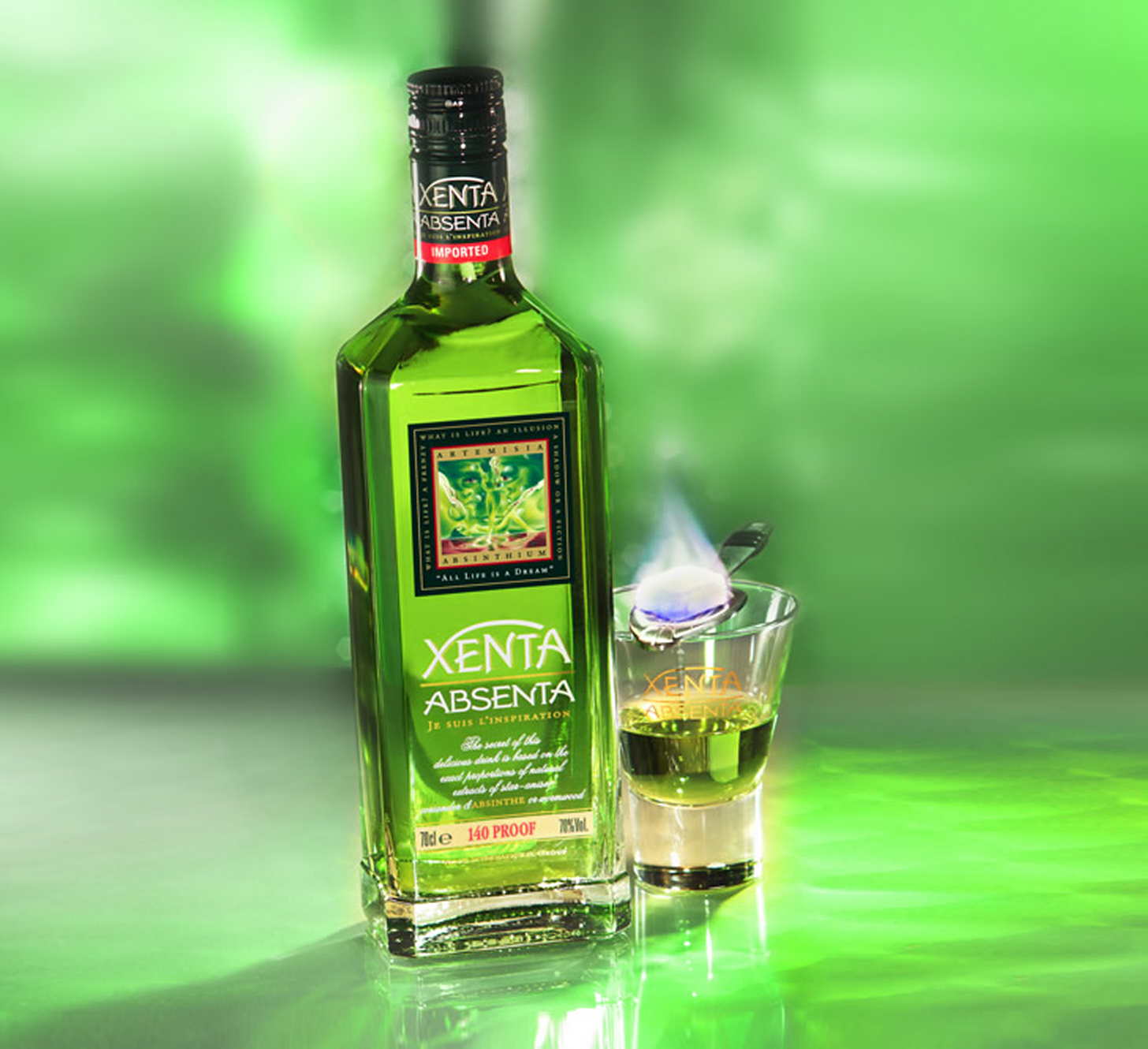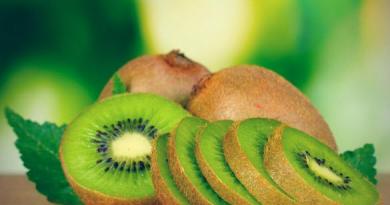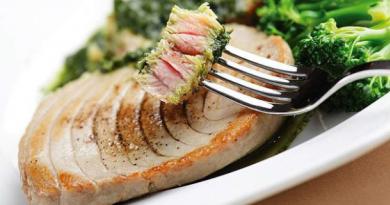Absinthe- an alcoholic drink with a strength of 50 to 89.9%! The most important component of absinthe is wormwood, the essential oils of which contain a large amount of thujone. Wormwood has been known to induce a euphoric, and in high doses, hallucinogenic state. It is thanks to these properties that absinthe has become so popular.
What is absinthe
It is thujone that is the main element due to which absinthe is famous for its effect. Other components of absinthe: Roman wormwood, anise, fennel, calamus, mint, lemon balm, licorice, angelica and some other herbs. The drink has numerous supporters and no less numerous opponents around the world. And the point here is by no means the strength of the drink, sometimes reaching up to 86 degrees, but the narcotic properties due to the use of bitter wormwood in its manufacture. Actually, it is the presence of this plant, which gave the name to the drink, that is the main distinguishing quality of this absinthe.In addition to the bitter taste of wormwood, absinthe also has the taste of other plants and spices contained in it: anise, mint, fennel, lemon balm, licorice, coriander and others. The outstanding taste qualities of all these plants are intended primarily to disguise the strength of the drink itself.
Varieties of absinthe
Absinthe can be classified based on various criteria: strength, color, content of the narcotic substance - thujone, place of manufacture and, finally, the brand of the direct manufacturer.
If we talk about strength, then according to the generally accepted classification, absinthe can be divided into two categories: high-strength drinks - 55-65 degrees and extremely high-strength drinks - classic examples of absinthe containing 68-86% alcohol. At the same time, in the eyes of true connoisseurs, only the last category of drinks that can retain the essential oils of wormwood deserves the right to be called absinthe. In addition, we must remember that real absinthe should be made exclusively on the basis of grape spirit.

Absinthe in the skull, 89.9% alcohol! (Absinthe Antitoxin)
Four types of absinthe are distinguished by color
- Green (light green to emerald)
Classical (chlorophyll) color of absinthe; yellow (amber) - is obtained due to the gradual "aging" of chlorophyll cells.
- Red (light ruby)
It is achieved by adding pomegranate extract to the drink.
- Black (dark brown)
In the manufacture, chlorophyll-free roots of wormwood and dark infusion of black acacia are used.
- white absinthe
During the prohibition period, there was the so-called white or "secret" absinthe ("La Bleue") - a drink containing thujone, but for the purpose of masking, devoid of a characteristic color due to a slightly modified manufacturing technology.
At the same time, it should be borne in mind that in the modern absinthe industry, the desired color can be imparted to the drink using food coloring.
According to the content of thujone
In turn, it is divided into three varieties:
- Absinthe with a high content of thujone
25-100 mg/liter.
- Low in thujone
1.5-10 mg/liter.
- Thujone Free
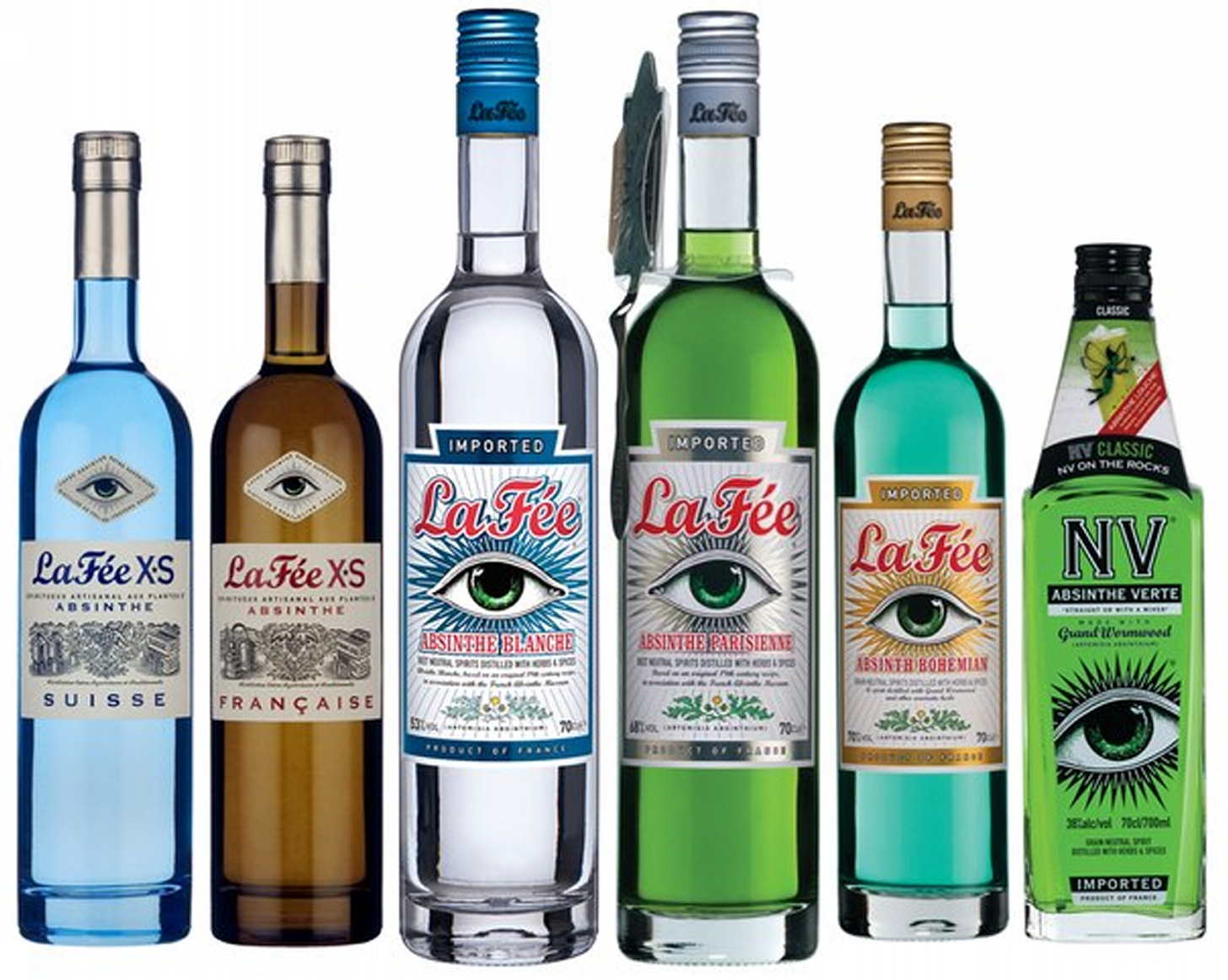
- Switzerland
Produces predominantly extremely strong, highly thujone-rich absinthe, but in very limited, virtually non-commercial quantities.
- Czech
First of all, it specializes in extremely strong varieties with varying degrees of thujone saturation, produced in huge batches.
- Spain
It does not just produce absinthe on an industrial scale, but tries to please both lovers of a less strong drink with a low content of thujone, and their opponents.
- France
The second homeland of absinthe - France - stands apart. Although the mixed distillates produced there are formally considered absinthe, this is done mainly out of respect for the contribution of this country to the process of creating and distributing the drink. As you know, French manufacturers completely abandoned the use of wormwood in their products, replacing it with star anise, which, as we already know, makes the drinks they offer only close similarities to absinthe.
There are, however, Absinth brands containing thujone, such as La fee and Lucid, which are positioned as produced in France. But at the same time, the first of them is produced by the British company Green Utopia, and the second by the American company Viridian Spirits LLC.
- Other countries
Secondary countries producing absinthe or drinks close to it in content are: Italy, Germany, the USA and the Netherlands. In particular, a curious phenomenon was the Liqueur d "Absinthe" sold in Amsterdam, containing 26 milligrams of thujone per liter, whose production is attributed to the French brand "Francois Guy". Recently, Russia, Ukraine and Bulgaria are trying to join the club of absinthe-producing countries. .
Speaking about well-known brands of absinthe, it is worth starting with a short review of the enterprises that produced the drink, so to speak, in its past life, that is, from the time of its creation (the end of the 18th century) to its almost universal ban (the beginning of the 20th century). Among the leading producers and brands of the drink of that time, in addition to the pioneer in this industry - the firm "Pernod Fils", we should mention such dinosaurs of the absinthe industry as "Fritz Duval Dubied Père & Fils", "A. Vichet, la Cressonnee", "Terminus", "A. Junod", "Cousin Jeune", "L. Lemercier" & "Duval", "Oxygenee" and "Kübler absinthe". At the same time, most of them were somehow connected with the Perno family or with the French area of Pontarlier.
The appearance of the Pernod Fils brand in Pontarlier took place thanks to Major Daniel Henri Dubier, who in 1797 bought a recipe for wormwood medicine from its creators, the Enrio sisters from the Swiss Kuve, and his son-in-law, the Swiss Henri-Louis Perno, who put the production of the drink on a factory basis. The extreme popularity of Pernod Fils is evidenced by the fact that by the end of the 19th century the company was producing 30,000 liters of drink daily.
In 1798, one of the closest relatives of the Dubier/Pernot house, Fritz Duval, opened his own business in Couve, naming his offspring: "Fritz Duval Dubied Père & Fils".
In turn, in Pontarlier there were factories of such well-known producers of absinthe as A. Vichet, la Cressonnee", "A. Junod", "Cousin Jeune" and "Terminus". By the way, the famous French theater actress Sarah Bernhardt was depicted on the advertising poster of the latter.
The fate of the drink produced under the brand name "Oxygenee" is interesting, on the advertisement of which there was an optimistic phrase: "It's great." After the lifting of the ban on absinthe, this brand reappeared on the shelves. But since, as we have already said, the current French absinthe does not contain wormwood, the revival of Oxygenee turned out to be very conditional.
Another thing is the Swiss brand "Kübler absinthe", founded in 1863, banned along with other brands in 1910, and resurrected by the great-grandson of the founder of the company after the re-legalization of absinthe.
Modern brands of absinthe
Since we have already established the main qualities of real absinthe (the presence of wormwood, a strength of 68 degrees and above, as well as the use of exclusively grape spirit in the manufacture), I believe that these criteria should be followed when choosing a drink. Thus, the brands of absinthe corresponding to the above selection principles will be listed below.
- Swiss La Bleu- 68 degrees, 25-35 mg of thujone per liter, grown from smuggled white absinthe.
- Logan Fils- 68 degrees, 10 mg of thujone per liter.
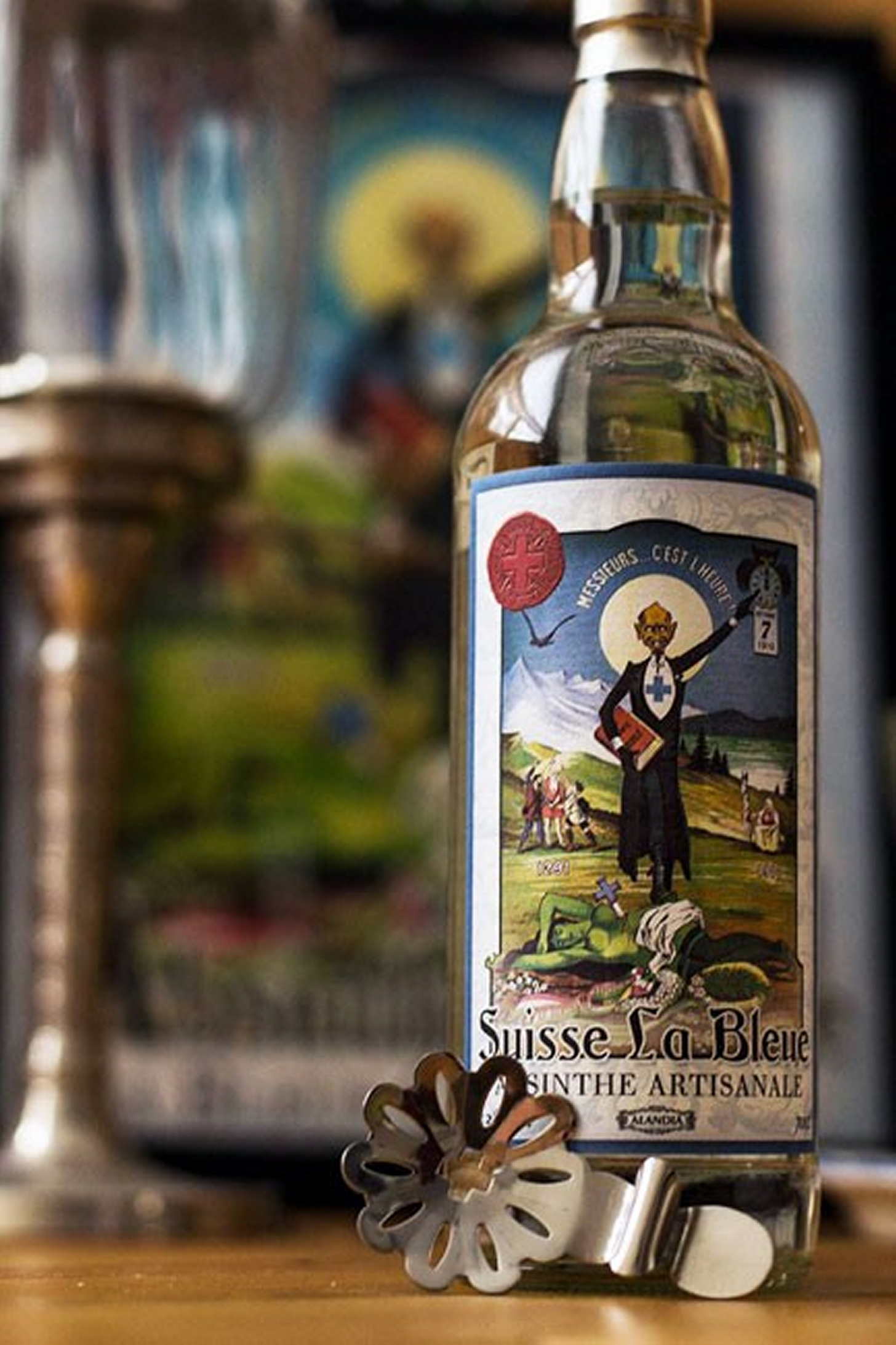
Absinthe by Swiss La Bleu
Czech absinthe
- Hill's absinth- 70 degrees, 1.5 mg of thujone per liter, it was this drink, despite the absence of a significant number of minor ingredients in it, that opened the era of the re-legalization of absinthe.
- Staroplzenecky Absinth- 70 degrees, 10 mg of thujone per liter, according to the manufacturer, the drink is made according to the traditional recipe of Napoleonic times.
- King of Spirits Original- 70 degrees, 10 mg thujone per liter and King of Spirits Gold - 70 degrees, 100 mg thujone per liter, both versions of the drink are yellow absinthe.
- Prague Absinth- 70 degrees, the amount of thujone per liter is significantly silent.
- Logan 100 by Logan Absinthe- 70 degrees, 100 mg of thujone per liter.
- Absinth Beetle- 70 degrees, 30 mg of thujone per liter.
- green magic- 70 degrees, 59.3 mg of thujone per liter.
- Teichenne Absinth
- Zelena Muza- 70 degrees, 10 mg of thujone per liter.
- Absinthe Original- 70 degrees, 10 mg of thujone per liter.
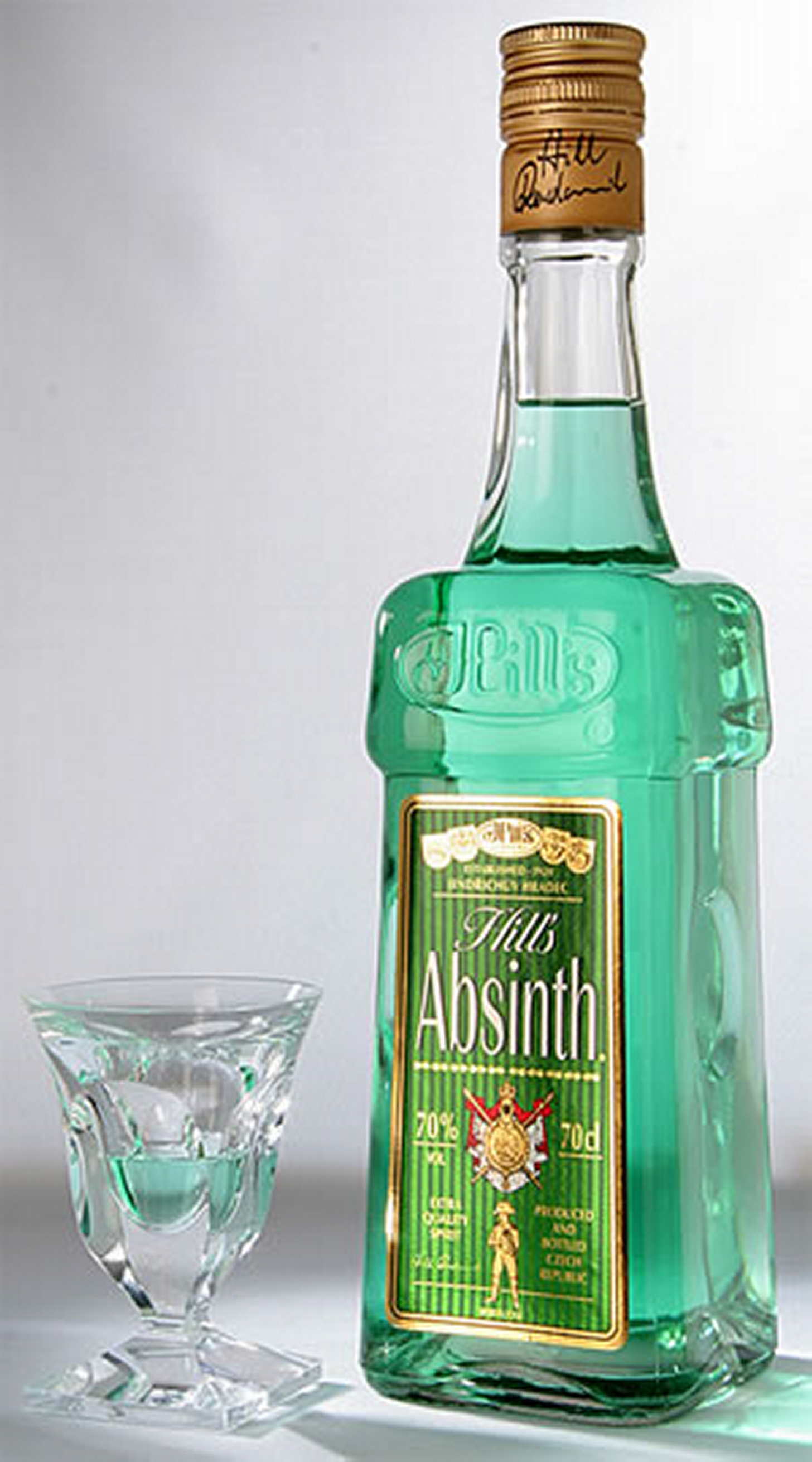
Absinthe from Hill's absinth
Spanish absinthe
- Xenta- 70 degrees, 35 mg of thujone per liter, recently also produced in Italy.
- Xenta Superior- 70 degrees, 35 mg of thujone per liter, this modification is distinguished by less anise, elegant packaging design and the presence of a sprig of wormwood in each bottle.
- Deva 70% variety of Deva Absenta
- Absenta Serpis- 70 degrees, up to 30 mg of thujone per liter.
